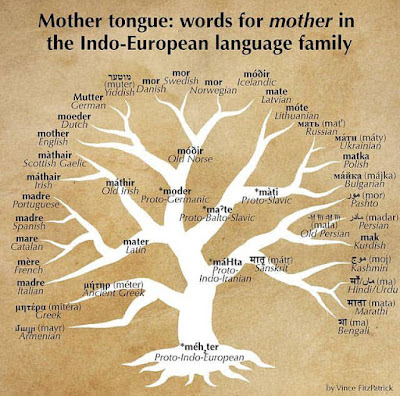Musings on Heathen Art
 |
| (left) Brooch. 9th Century. Revninge, Denmark. (center) Silver Pendant from between 800 – 1050 CE. Statens Historiska Museum, Stockholm. (right) Freyr Statue. Södermanland, Sweden. |
I had the unique experience of making a Heathen themed work of art to share with my tribe, and it allowed me to reflect on Heathen art as a whole. There are some interesting trends worth noting.
If we look at historical Heathen art it is difficult to know what the intent of the maker was. Was their art solely a devotional act, or was it also a way to make a profit? And are some of the things we would think of today as historical Heathen art even meant to be that at all? A good example are some of the images that we speculate are Freyja but may just have been a depiction of a woman.
Moving forward to modern Heathen art, I would say most of it is of one of two types:
 |
| (left) Runestone in Täby. 1100CE. (middle) The Tjängvide stone. 8th-9th Century. (right) Modern depiction of the Allfather by Lørna from Anglesdottir Arts. |
Historically Inspired Art
This is art that is either a recreation of historical art or using similar styles.
 |
| (left) Iron Age God Pole. Kulturhistorisk Museum, Oslo, Norway. (right) Heimdall Pendant and God Pole by Chris Corvus at Gungnir Godpoles. |
Devotional Art
This art is more modern looking but is devotional, usually representing a single deity or a story from the Lore.
 |
| (left) Sigyn by Annette. (right) Sif by Anna Novikova. |
What is really missing is art that represents Heathen concepts, or even Heathen holidays (with the exception of Jól, which has more depiction.) I find that to be a huge problem when writing blogs here. I have more recently been turning to AI to create images on Heathen concepts I discuss because there really isn’t much out there. That also has its drawbacks though.
 |
| Winter Nights image by AI at Craiyon.com |
For example: In my last blog post I was talking about Winter Nights and wanted an image for that. I prompted the AI to draw Winter Nights Festival and along with that I used the descriptor of the god Freyr and sacrificing cattle. The image it came up with can only be described as Freyja with an elephant and a triceratops. So I ended up looking elsewhere for a somewhat related image.
 |
| (left) Sol and Mani. (right) Sif. |
While I see most modern Heathen art falling into either the category of Devotional or Historically Inspired, I also use art another way in Heathenry. That is to process ideas. That could be images I get in dreams or meditation, or sometimes even when I am listening to a podcast or watching Heathen videos on YouTube. I find drawing helps me focus and listen better and make connections.
 |
| (left) Fenrir dream. (right) Ocean Keltoi. |
Arguably as well, any art I make is Heathen because I am a Heathen and it is influenced by my worldview.
For the art I made to share with my tribe I wanted to step outside that box and make a modern art piece depicting a Heathen concept.
The concept I chose was Örlög.
Örlög is the concept of our actions and deeds, as well as those of our ancestors, and how they affect our experience in the present. Similarly, how what we do now will affect our descendants. I think what is often overlooked when we discuss this topic is the dimension of Örlög on the community level.
.jpg) |
| Örlög. |
Symbolism in my Painting
Trees - represent people and just as trees are connected through mycelium networks in the roots, we are connected to our communities
Seasons - You can see the passage of time and the year's cycles in the trees and the background.
Past/Roots - Just as we are connected to our community by common history, we are also connected to the past. This is represented by the faces of ancestors among the roots as well as the water at the very bottom representing the 3 wells beneath Yggdrasil and them being associated with memory
Present/Stalks - In the trunks of the trees you see the people making up a community in the present. Beside them are wisps representing the Other Beings that they interact with.
Future/Leaves and Buds - At the top of the painting the leaves and buds represent the future and descendants. Around the central tree fireflies fly representing hopes and aspirations for the future. While we cannot know the future we can live our best lives now to make the future more promising.
Day and Night - The painting mostly takes place at night but there are two windows among the tree branches opening into daylit worlds. This shows that there is always an aspect of not being able to know the path we are on, but the light streaming down from these windows touches us, giving us inspiration for our growth. The aspect of these other worlds is the touch of the divine in our lives.
I hope this inspires you in making your own Heathen art, or supporting other Heathen artists and creators.
Heathen/Pagan Artists to Check Out:
Lørna from Anglesdottir Arts https://www.etsy.com/uk/shop/AnglesdottirArts
Chris from Gungnir Godposts https://www.instagram.com/gungnir_godposts/
Annette https://www.etsy.com/shop/Anetteprs
Anna Novikova https://www.behance.net/gallery/6484367/Scandinavian-mythology
Image Sources:
All images are sourced in the body of this blog except those that are my own work, and links to their pages or stores are above.



